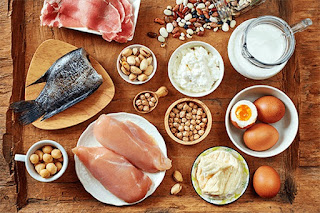COOK TIME: 10 mins
SERVINGS: 4 servings
Note: Make sure the inside of the pot is completely dry
before heating the oil in it, or else the oil will sputter.
Ingredients
- 3 tablespoons coconut oil or extra virgin
olive oil
- 1/3 cup high quality popcorn kernels
- 1 tablespoon butter or more to taste, optional
- Salt to taste
Method
1. Heat the oil:
Heat the oil in a 3-quart thick-bottomed saucepan on medium
high heat. If you are using coconut oil, allow all of the solid oil to melt.
2. Put 3 or 4 popcorn kernels into the oil:
Wait for the popcorn kernels to pop.
3. Add the rest of the popcorn:
When the kernels pop, add the rest of the 1/3 cup of popcorn kernels in an even layer.
4. Cover the pot, remove from heat and count 30 seconds
This method first heats the
oil to the right temperature, then waiting 30 seconds brings all of the other
kernels to a near-popping temperature so that when they are put back on the
heat, they all pop at about the same time.
5. Return the pan to
the heat:
The popcorn should begin
popping soon, and all at once. Once the popping starts in earnest, gently shake
the pan by moving it back and forth over the burner.
Simple tip!
As the popcorn pops, try to keep the lid slightly ajar to
let the steam from the popcorn release (the popcorn will be drier and crisper
and less tough).
6. Once the popping slows to several seconds between pops,
remove the pan from the heat:
Remove the lid and dump the popcorn immediately into a wide
bowl.
With this technique, nearly all of the kernels pop, and
nothing burns.
7. Melt butter in the empty hot pan:
If you are adding butter, you can easily melt it by placing
the butter in the now empty, but hot pan.
Simple tip!
If you let the butter get just a little bit brown, it will
add an even more intense, buttery flavor to the butter and to your popcorn.
Just drizzle the melted butter over the popcorn and toss to
distribute.
8. Sprinkle the popcorn with salt to taste:
Fun toppings for the popcorn: Spanish smoked paprika,
nutritional yeast, cayenne powder, chili pepper, curry powder, cumin, grated
Parmesan cheese.
|
NUTRITION
FACTS (PER SERVING) Calories: 99 Fat: 11g Carbs: 1g Protein: 0g |




































